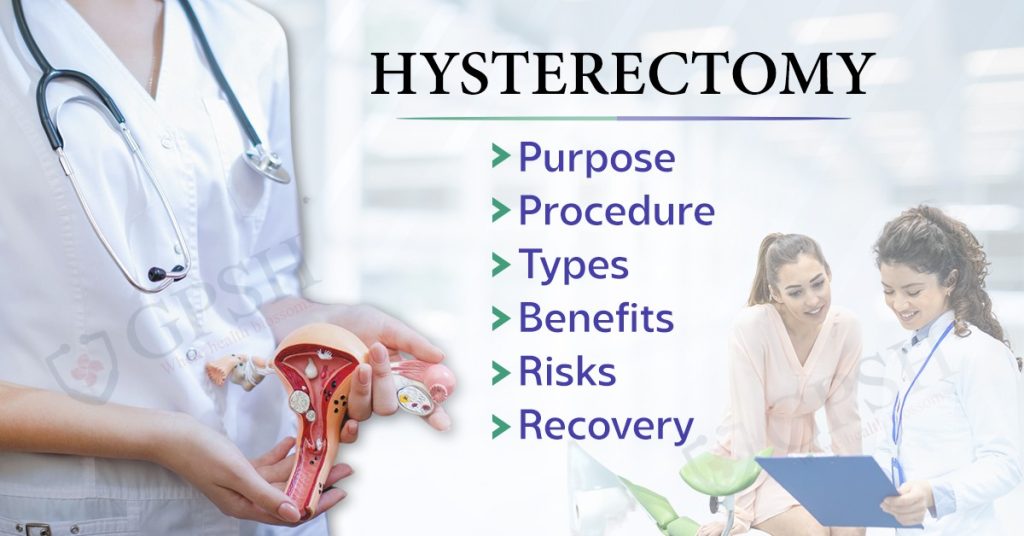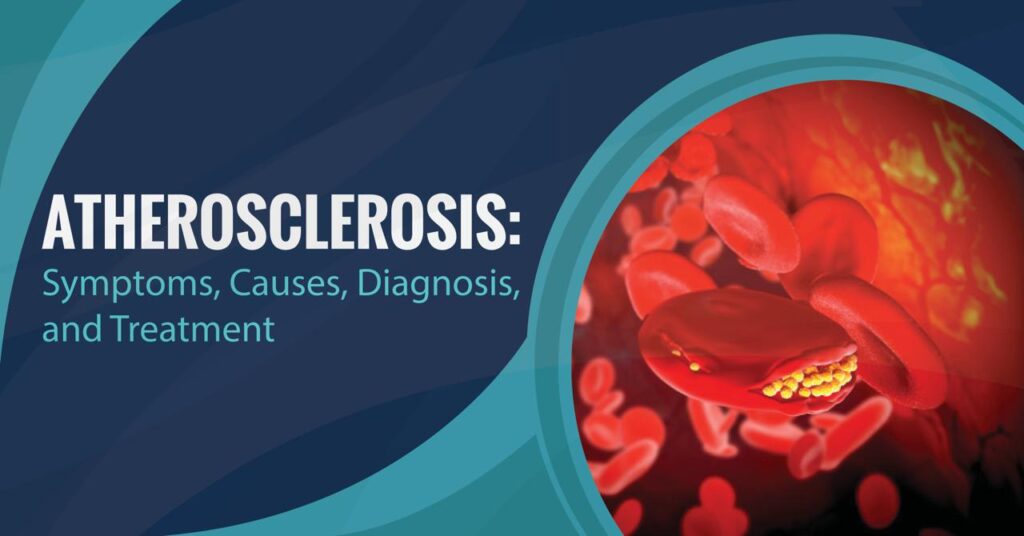What is Hysterectomy?
A hysterectomy is a surgical procedure in which the uterus (womb) is removed from the body. It can involve the removal of other reproductive organs such as the cervix, ovaries, and fallopian tubes, depending on the specific type of hysterectomy being performed. Hysterectomies are conducted for various medical reasons, including the treatment of gynecological conditions such as uterine fibroids, endometriosis, adenomyosis, and certain cancers. The procedure can be performed through different surgical approaches, including abdominal, vaginal, laparoscopic, and robotic-assisted techniques. The decision to undergo a hysterectomy is typically made in consultation with a healthcare provider after considering the patient’s medical history, condition, and treatment options.
Purpose of Hysterectomy
A hysterectomy is performed for various medical reasons, depending on the individual’s specific health condition and needs. Some common purposes of hysterectomy include:
● Treatment of Gynecological Conditions: Hysterectomy may be recommended to address various gynecological conditions causing significant discomfort, pain, or health issues. These conditions include:
○ Uterine Fibroids: Noncancerous growths in the uterus that can cause heavy menstrual bleeding, pelvic pain, and pressure on surrounding organs.
○ Endometriosis: A condition where tissue similar to the lining of the uterus grows outside the uterus, causing pain, inflammation, and sometimes infertility.
○ Adenomyosis: When the tissue that lines the uterus grows into the muscular wall of the uterus, leading to pain, heavy bleeding, and enlargement of the uterus.
○ Chronic Pelvic Pain: Hysterectomy might be considered for individuals with persistent pelvic pain that doesn’t respond to other treatments.
○ Uterine Prolapse: When the uterus descends into the vaginal canal due to weakened supporting tissues, causing discomfort and urinary problems.
● Cancer Treatment: In cases of uterine, cervical, or ovarian cancer, a hysterectomy might be part of the treatment plan to remove cancerous tissues. Depending on the extent of the cancer and its spread, different types of hysterectomies may be performed.
● Uncontrolled Uterine Bleeding: If other medical interventions fail to control heavy or abnormal uterine bleeding, a hysterectomy might be considered to alleviate this symptom.
● Birth Control and Sterilization: In some cases, individuals may choose to have a hysterectomy as a method of permanent birth control or sterilization. This is generally considered when other birth control methods are not suitable or desired.
You Can Also Read:- Aspergillosis: Types, Causes, Symptoms, Diagnosis & Treatment
Procedure of Hysterectomy
The procedure for a hysterectomy can vary based on factors such as the reason for the surgery, the patient’s medical history, and the surgeon’s expertise. There are different surgical approaches that can be used to perform a hysterectomy:
● Abdominal Hysterectomy: In this approach, an incision is made in the abdominal area, usually horizontally along the bikini line or vertically from the belly button to the pubic bone. The uterus is then removed through this incision. Abdominal hysterectomy is typically used when the uterus is large when there are extensive adhesions or scar tissue, or when additional surgical procedures are needed at the same time.
● Vaginal Hysterectomy: This approach involves making an incision inside the vagina to remove the uterus. It’s often used when the uterus isn’t too large and there are no other significant conditions requiring abdominal access. Recovery time is generally shorter compared to abdominal hysterectomy.
● Laparoscopic Hysterectomy: Also known as minimally invasive surgery, this approach involves making a few small incisions in the abdomen. A tiny camera (laparoscope) is inserted through one of the incisions to provide the surgeon with a view of the surgical site. Special surgical instruments are used to remove the uterus in pieces through small incisions. This approach offers quicker recovery, less pain, and smaller scars compared to traditional open surgery.
● Robotic-Assisted Hysterectomy: Similar to laparoscopic surgery, a robotic-assisted approach involves making small incisions and using a robotic system controlled by the surgeon. The robot’s precision and maneuverability can aid in performing complex surgical procedures. This approach offers the advantages of minimally invasive surgery while enhancing the surgeon’s dexterity.
The specific steps of a hysterectomy procedure can vary depending on the approach used and the individual patient’s circumstances. Generally, the steps involve:
● Anesthesia: To make sure the patient is relaxed and pain-free throughout the procedure, anesthetic is administered. The type of anesthesia (general or regional) is determined based on the surgical approach and the patient’s health.
● Incision: Depending on the chosen approach, the surgeon makes the necessary incisions (abdominal, vaginal, or laparoscopic).
● Dissection and Removal: The surgeon carefully dissects the tissues surrounding the uterus to separate it from other structures such as blood vessels and ligaments. The uterus, and in some cases, the cervix, is then removed. In some cases, additional procedures like removal of ovaries or fallopian tubes may be performed.
● Closure: The surgical incisions are closed using sutures or staples, and the incision sites are dressed with sterile dressings.
● Recovery: After the surgery, the patient is monitored in a recovery area until they wake up from anesthesia. Depending on the surgical approach, hospital stay, and overall recovery process, patients may need to stay in the hospital for a few days or be discharged relatively quickly.
You Can Also Read:- When to Take Creatine? Best Time to take Creatine
Types of Hysterectomy
There are several types of hysterectomy, each involving the removal of different parts of the reproductive organs. The specific type of hysterectomy recommended depends on the patient’s medical condition, the reason for the surgery, and the surgeon’s judgment. The main types of hysterectomy are:
● Total Hysterectomy (TH): Both the uterus and the cervix are removed during a total hysterectomy. The majority of hysterectomy procedures are of this kind.
● Partial (or Subtotal) Hysterectomy: Also known as a supracervical hysterectomy, this procedure involves removing the upper part of the uterus while leaving the cervix intact. The cervix is the lower portion of the uterus that extends into the vagina.
● Total Hysterectomy with Bilateral Salpingo-Oophorectomy (TH/BSO): In addition to removing the uterus and cervix, this procedure also involves the removal of both ovaries and fallopian tubes. It is often performed to reduce the risk of ovarian and breast cancer in individuals with a high genetic predisposition.
● Radical Hysterectomy: A radical hysterectomy is typically performed for cases of gynecological cancer. It involves the removal of the uterus, cervix, surrounding tissues (parametrium), and sometimes nearby lymph nodes. This procedure aims to remove cancerous tissues and is used in the treatment of cervical, uterine, and ovarian cancers.
● Hysterectomy with Bilateral Salpingectomy: This type of hysterectomy involves the removal of both fallopian tubes along with the uterus and possibly the cervix. It is sometimes recommended as a preventive measure to reduce the risk of ovarian cancer.
● Hysterectomy with Oophorectomy (Unilateral or Bilateral): In this procedure, one or both ovaries are removed along with the uterus. Oophorectomy may be performed if there are concerns about ovarian health or if the ovaries are affected by a condition like ovarian cysts or endometriosis.
Benefits of Hysterectomy
Hysterectomy is a major surgical procedure that is often considered when other treatments have not been effective in addressing gynecological conditions. While the decision to undergo a hysterectomy should be made in consultation with a healthcare provider and tailored to individual circumstances, there can be certain benefits associated with the procedure. Some potential benefits of a hysterectomy include:
● Relief from Symptoms: Hysterectomy can provide relief from symptoms associated with various gynecological conditions, such as uterine fibroids, endometriosis, adenomyosis, and chronic pelvic pain. Removing the uterus can eliminate the source of pain, heavy bleeding, and discomfort that these conditions can cause.
● Resolution of Health Issues: Hysterectomy can be a curative procedure for certain health issues, particularly gynecological cancers. Removing cancerous tissue through a hysterectomy can effectively treat or prevent the spread of cancer to other parts of the body.
● Improved Quality of Life: For individuals with severe and debilitating symptoms, a hysterectomy can significantly improve their overall quality of life by eliminating pain, discomfort, and inconvenience caused by their condition.
● Reduced Risk of Recurrence: In cases of gynecological cancers, a hysterectomy can help reduce the risk of cancer recurrence by removing the affected organs.
● Permanent Birth Control: For individuals who have completed their family planning or are seeking permanent contraception, a hysterectomy can provide a reliable method of birth control.
● Elimination of Menstrual Issues: Hysterectomy eliminates menstruation, which can be particularly beneficial for individuals with heavy or irregular menstrual bleeding, as well as those with conditions like adenomyosis.
● Decreased Risk of Certain Health Conditions: Hysterectomy with bilateral salpingo-oophorectomy (removal of ovaries and fallopian tubes) can reduce the risk of ovarian and breast cancers in individuals with a high genetic predisposition.
● Simpler Follow-Up Care: After a hysterectomy, there may be a decreased need for ongoing medical monitoring and treatments related to gynecological conditions.
Risk Factors of Hysterectomy
Hysterectomy is a major surgical procedure that carries certain risks and potential complications. The decision to undergo a hysterectomy should be carefully considered in consultation with a healthcare provider. Some of the potential risk factors and complications associated with hysterectomy include:
● Surgical Risks: Like any surgery, hysterectomy carries risks related to anesthesia, infection, bleeding, and blood clots. The risk can be higher for individuals with certain medical conditions such as heart disease, diabetes, or a history of blood clotting disorders.
● Infection: Infections can occur at the surgical site or within the pelvic area. Antibiotics are usually administered before and after surgery to help prevent infections.
● Bleeding: While every effort is made to control bleeding during surgery, there is a risk of excessive bleeding during or after the procedure, which might necessitate blood transfusions or additional surgery.
● Blood Clots: Blood clots can form in the legs (deep vein thrombosis) or travel to the lungs (pulmonary embolism), which can be life-threatening. Measures such as early mobilization and blood-thinning medications might be used to prevent blood clots.
● Damage to Adjacent Organs: During the surgery, nearby organs such as the bladder, ureters (tubes that carry urine from the kidneys to the bladder), and intestines can be accidentally damaged. This can lead to complications that require additional surgical repair.
● Urinary Issues: There can be temporary or permanent urinary issues, including difficulty emptying the bladder, urgency, or urinary incontinence.
● Change in Hormone Levels: If the ovaries are removed (oophorectomy), hormonal changes can occur, leading to menopausal symptoms such as hot flashes, mood swings, and decreased bone density.
● Sexual Dysfunction: Some individuals may experience changes in sexual function or libido following a hysterectomy. This can be due to both physical and psychological factors.
● Psychological Impact: The removal of reproductive organs can have emotional and psychological effects on some individuals, including feelings of loss or changes in body image.
● Chronic Pain: Some individuals may experience chronic pelvic or abdominal pain after a hysterectomy.
● Adverse Reaction to Anesthesia: Anesthesia carries risks of allergic reactions, breathing difficulties, or adverse responses to the drugs used.
● Delayed Recovery: The recovery period after a hysterectomy can vary. Some individuals may experience a longer and more challenging recovery, while others may recover relatively quickly.
Recovery of Hysterectomy
The recovery process after a hysterectomy can vary depending on several factors, including the type of hysterectomy performed (abdominal, vaginal, laparoscopic), the patient’s overall health, and any complications that may arise during or after surgery. This is a rough outline of what to anticipate during the healing process:
● Hospital Stay: The length of your hospital stay will depend on the type of hysterectomy and your overall health. Abdominal hysterectomies typically require a longer hospital stay (2 to 3 days) compared to vaginal or laparoscopic approaches (usually 1 to 2 days).
● Pain Management: After surgery, pain and discomfort are typical. To treat your post-operative pain, your doctor will prescribe painkillers. It’s important to follow their instructions for taking these medications.
● Physical Activity: You’ll likely be encouraged to start moving around as soon as possible after surgery to prevent blood clots and promote healing. However, you should avoid heavy lifting, strenuous activities, and driving until you receive clearance from your healthcare provider.
● Incision Care: If you have incisions, follow your healthcare provider’s instructions for keeping them clean and dry. This can help reduce the risk of infection and promote proper healing.
● Diet: You might start with a liquid or soft diet after surgery and gradually transition to regular foods as tolerated. Adequate hydration and nutrition are important for healing.
● Bowel Movements: Some individuals experience constipation after surgery due to anesthesia, pain medications, and changes in activity levels. Your healthcare provider can recommend strategies to manage this, such as staying hydrated and incorporating fiber-rich foods.
● Vaginal Discharge: Vaginal bleeding or discharge is normal after a hysterectomy. It’s typically heaviest in the first few days and then gradually decreases. During this time, use pads rather than tampons.
● Follow-Up Appointments: To track your progress and make sure there are no issues, your doctor will set up follow-up sessions. Attending these appointments and addressing any worries you may have are crucial.
● Return to Work and Activities: Your ability to return to work and normal activities will depend on the type of hysterectomy and your healing process. Light activities can often be resumed after a few weeks, while more strenuous activities may need to be avoided for several weeks to a few months.
● Emotional Well-being: Hysterectomy can have emotional effects. It’s normal to experience a range of emotions during recovery, including relief, sadness, or adjustment to changes in your body. If necessary, ask friends, family, or a mental health professional for assistance.









